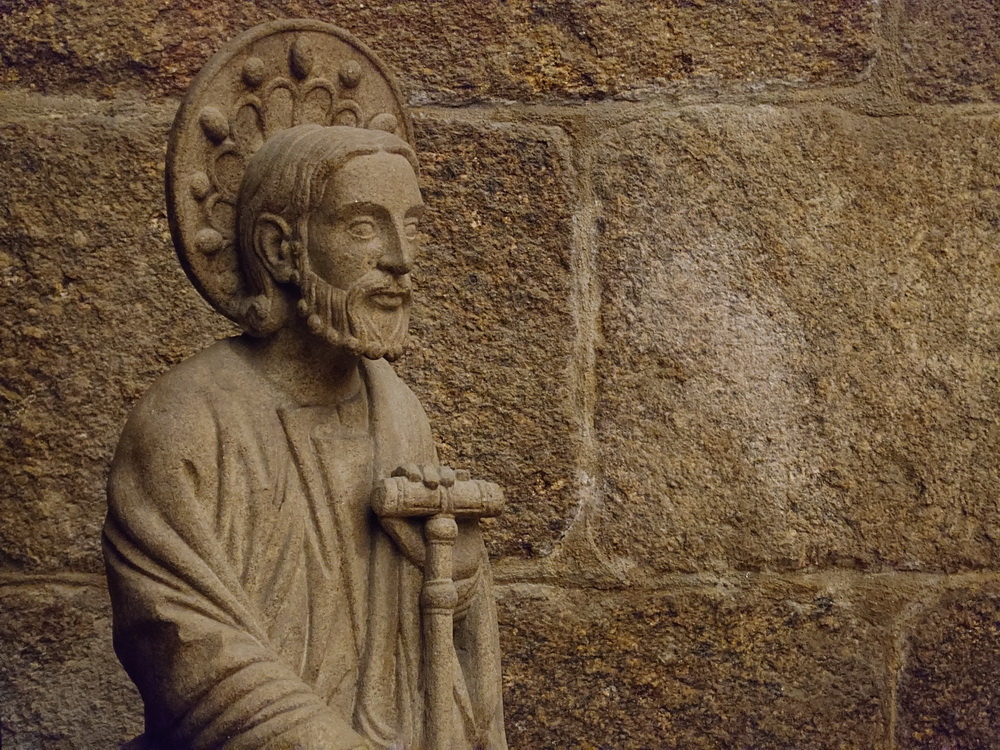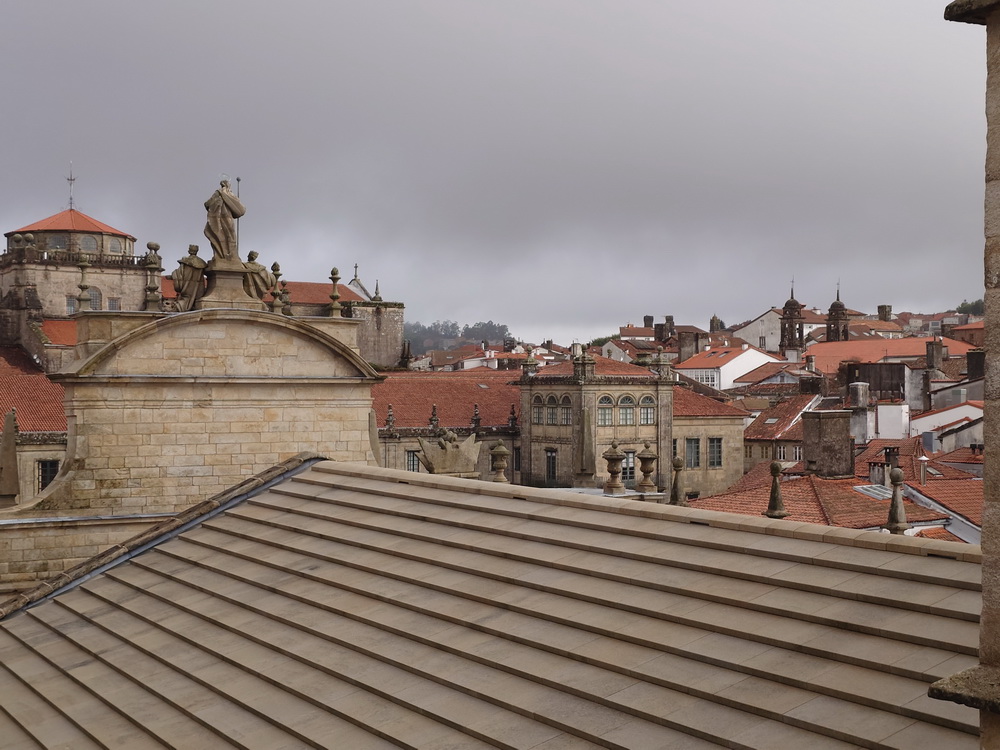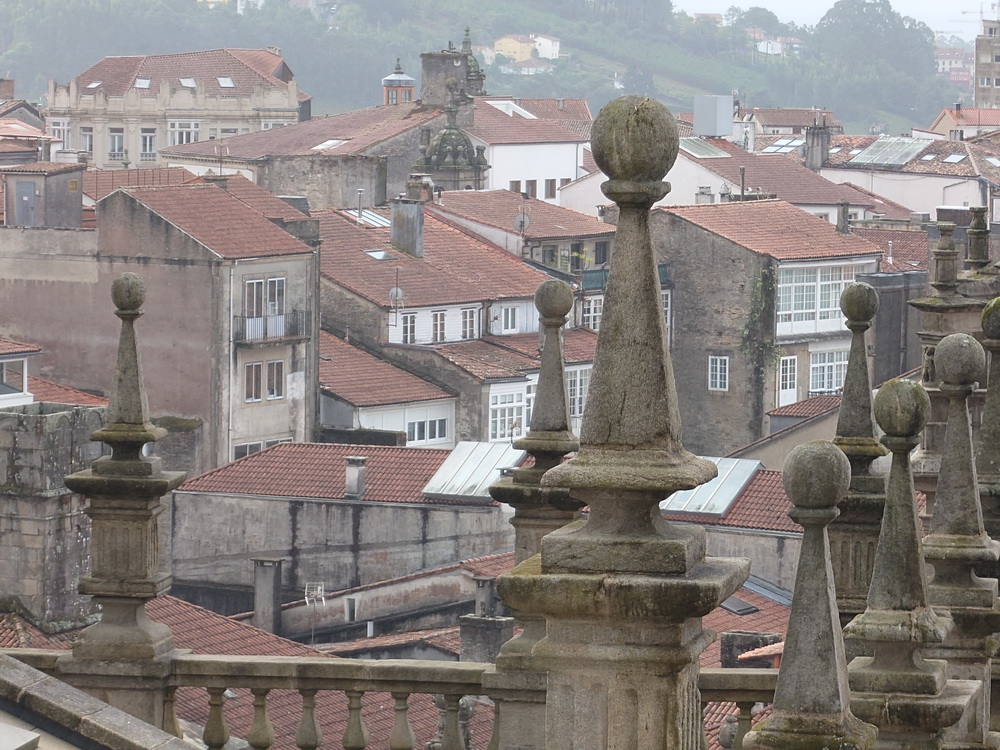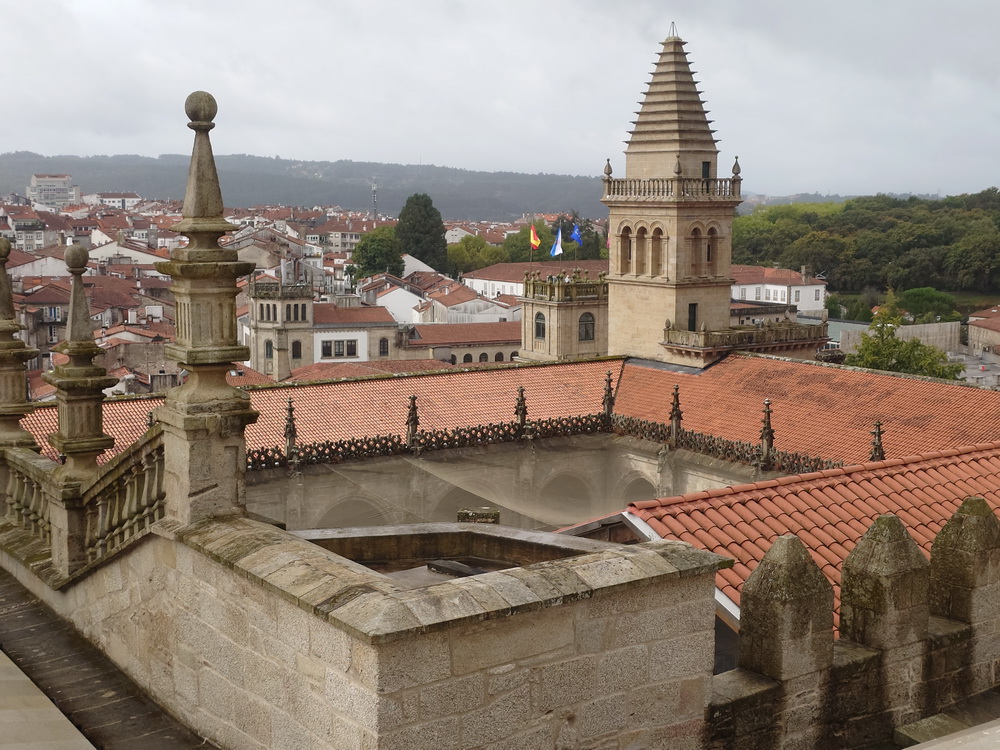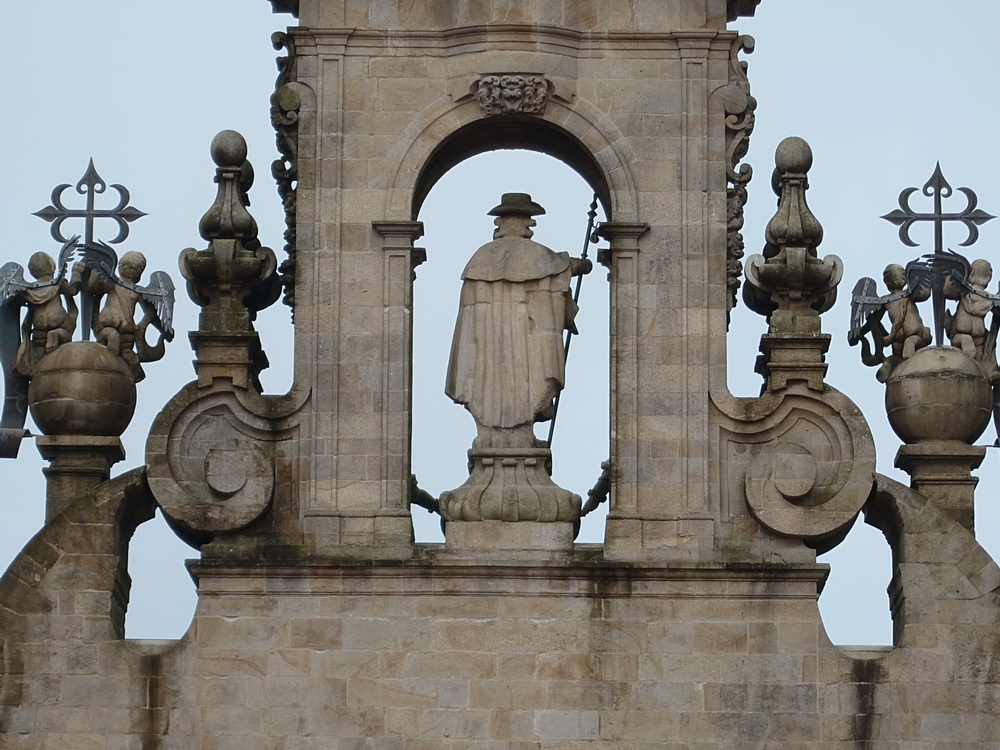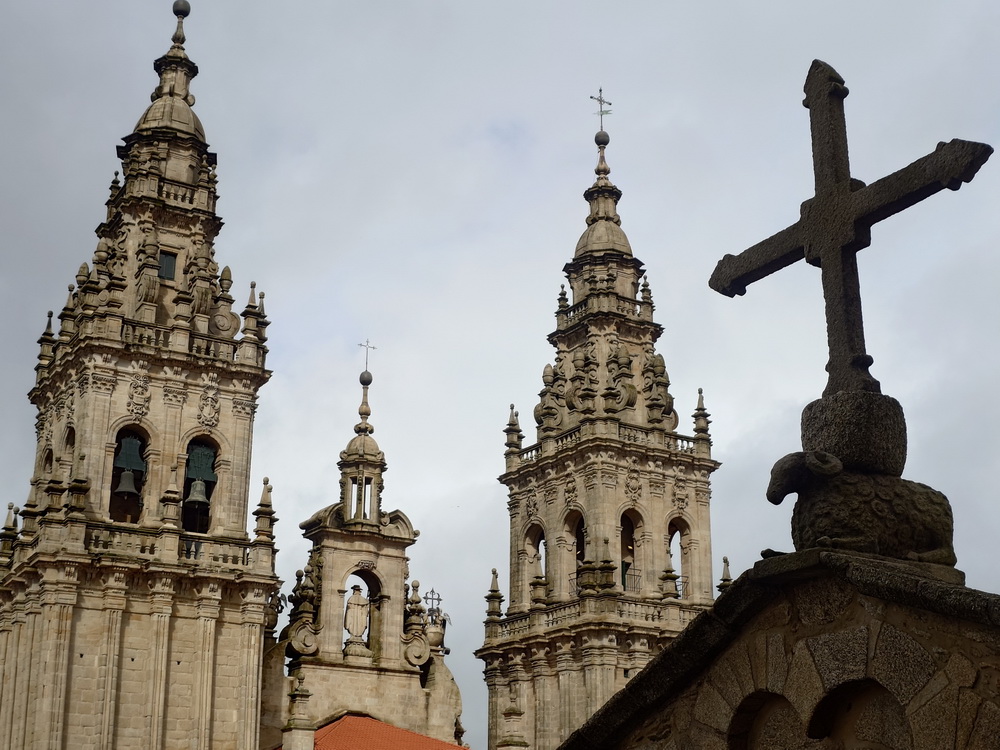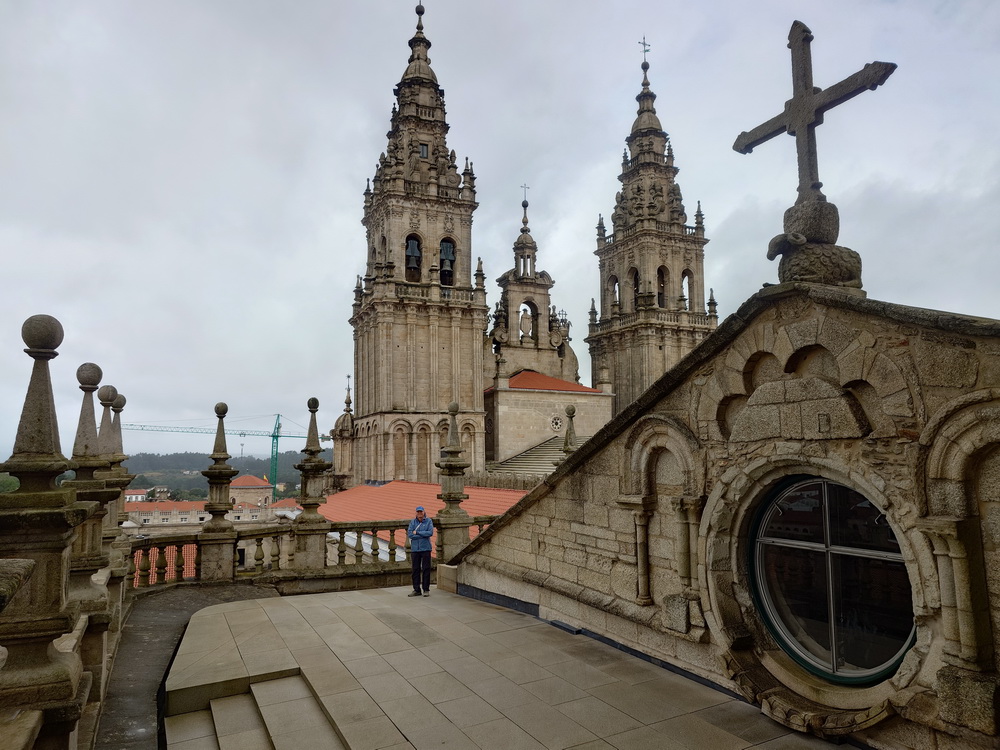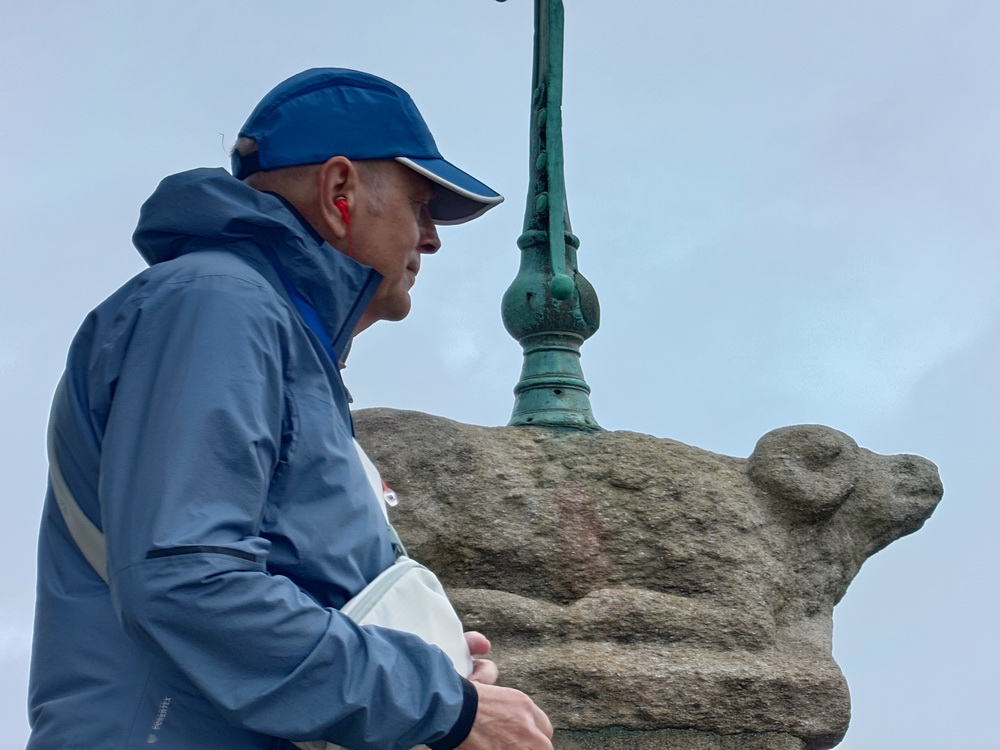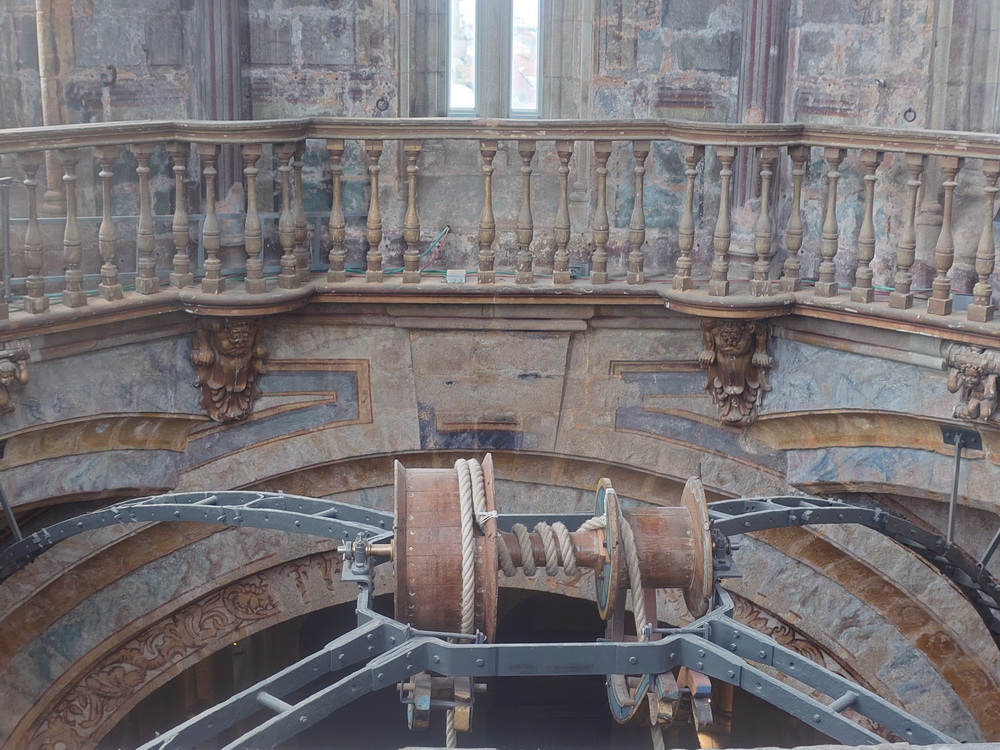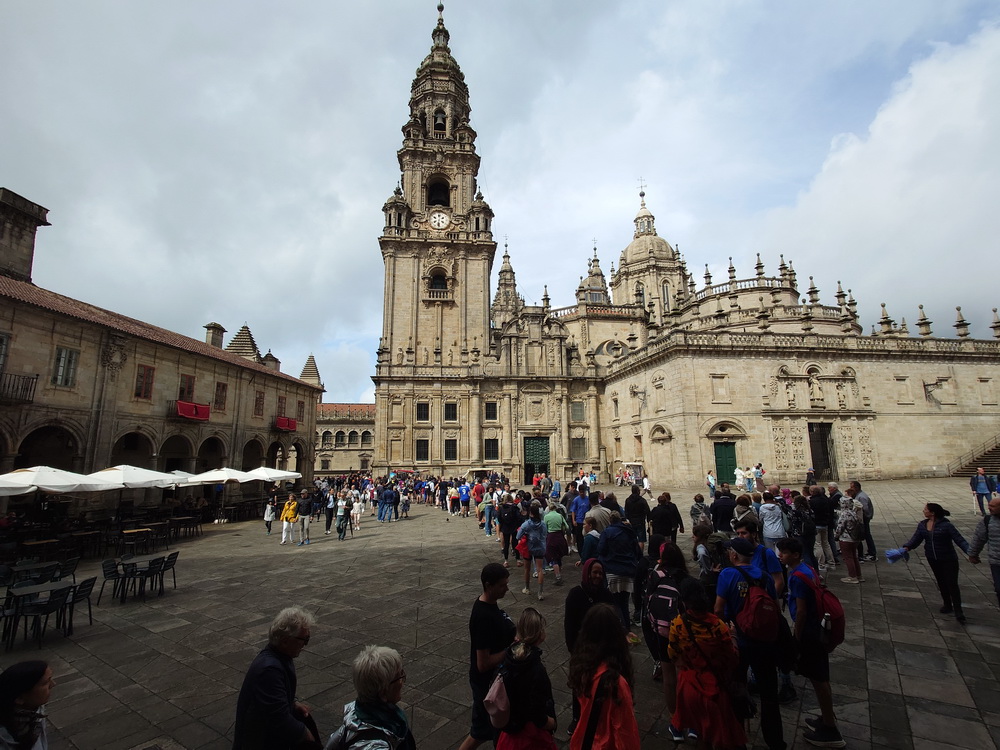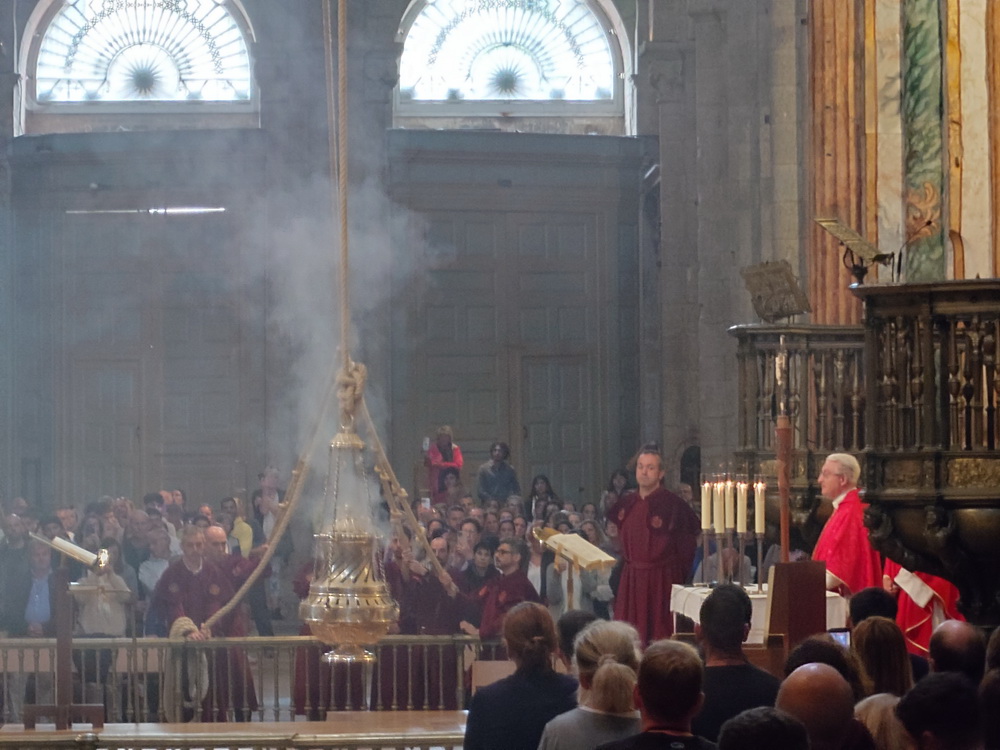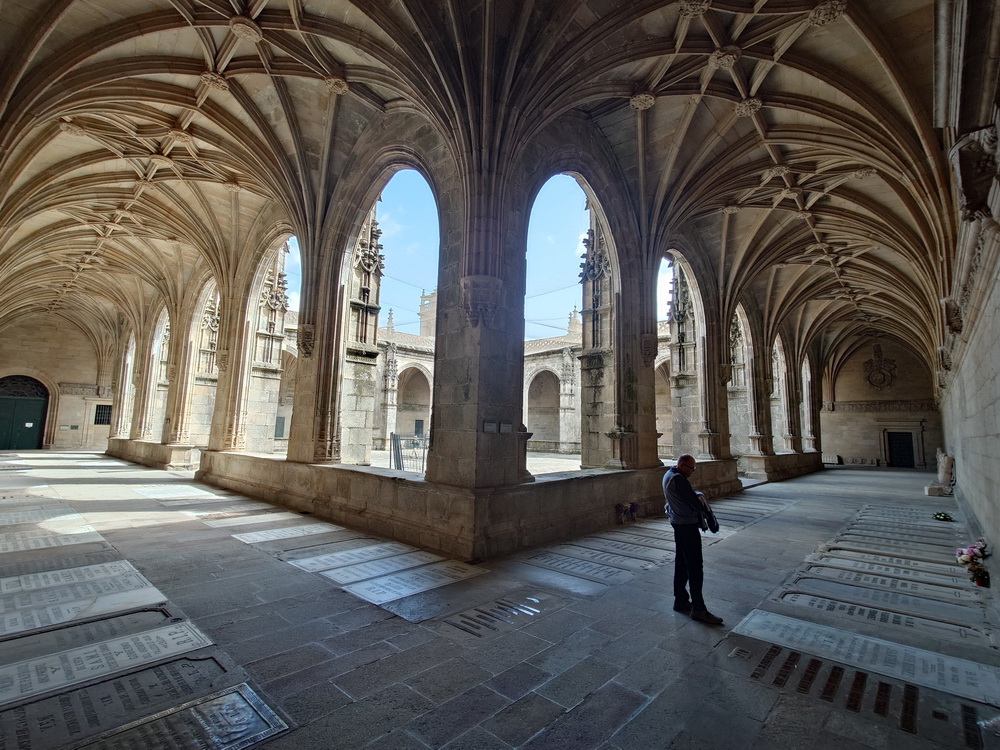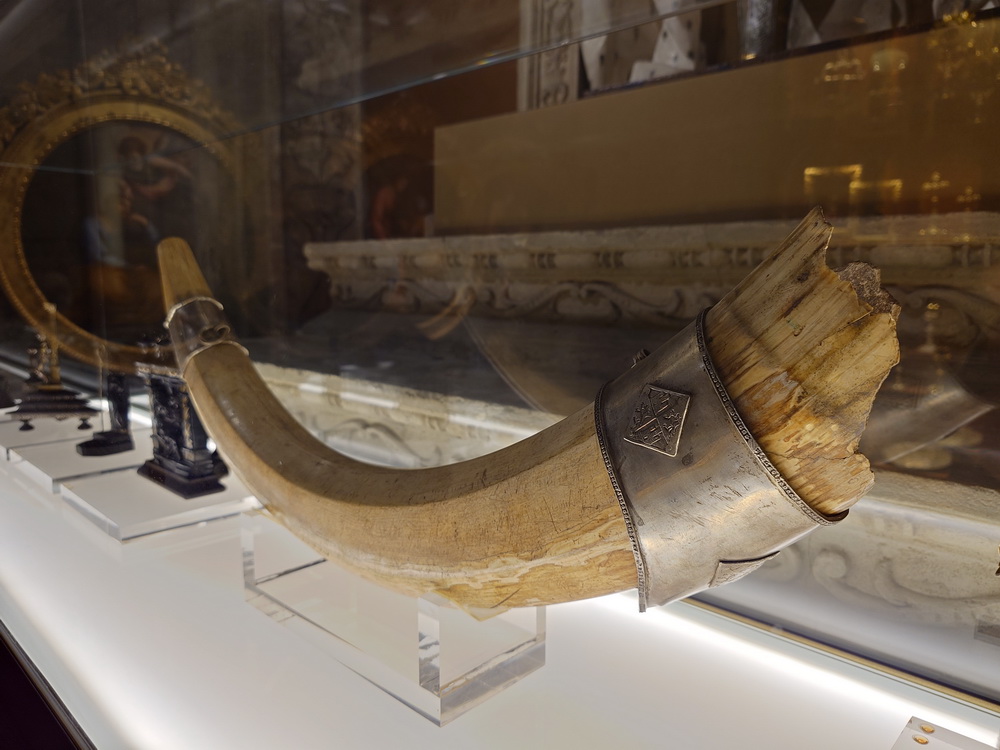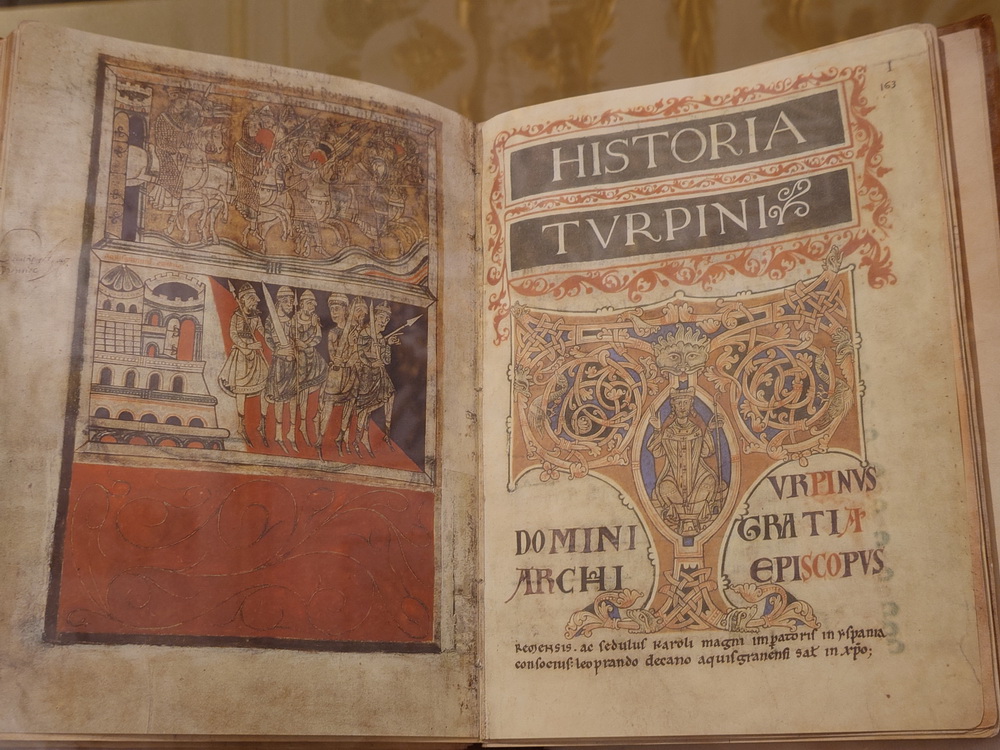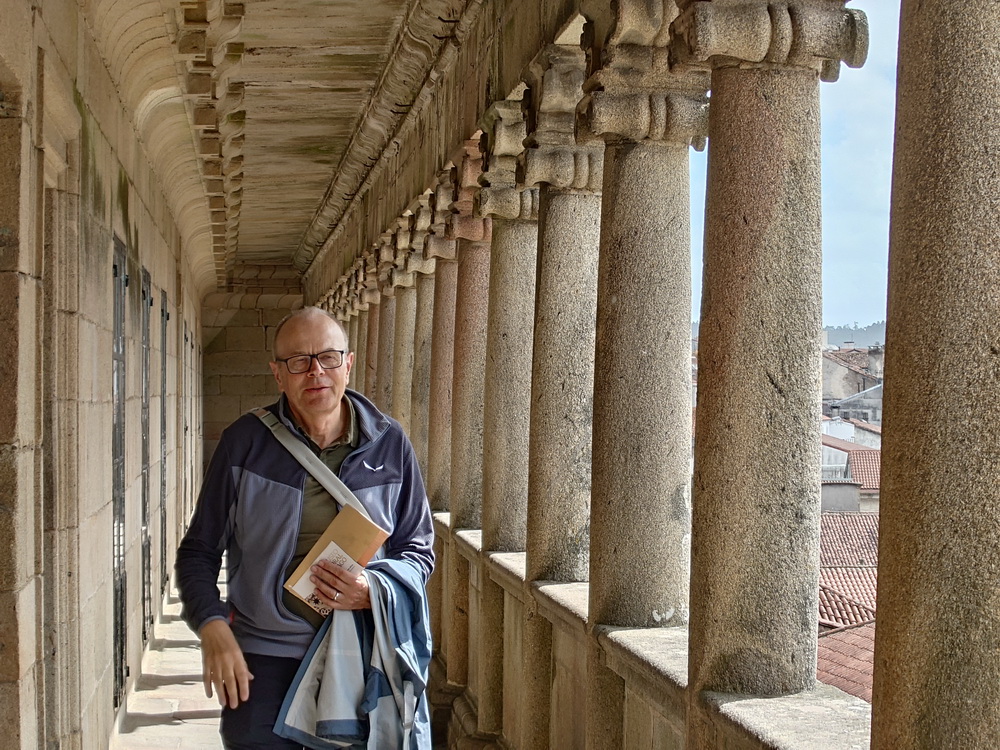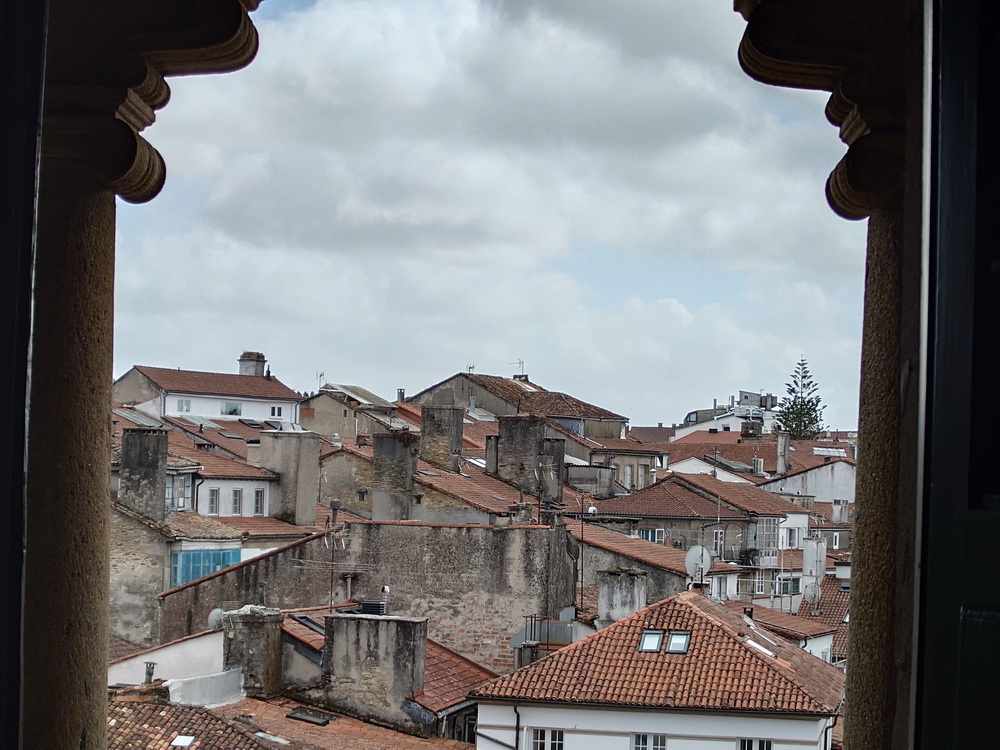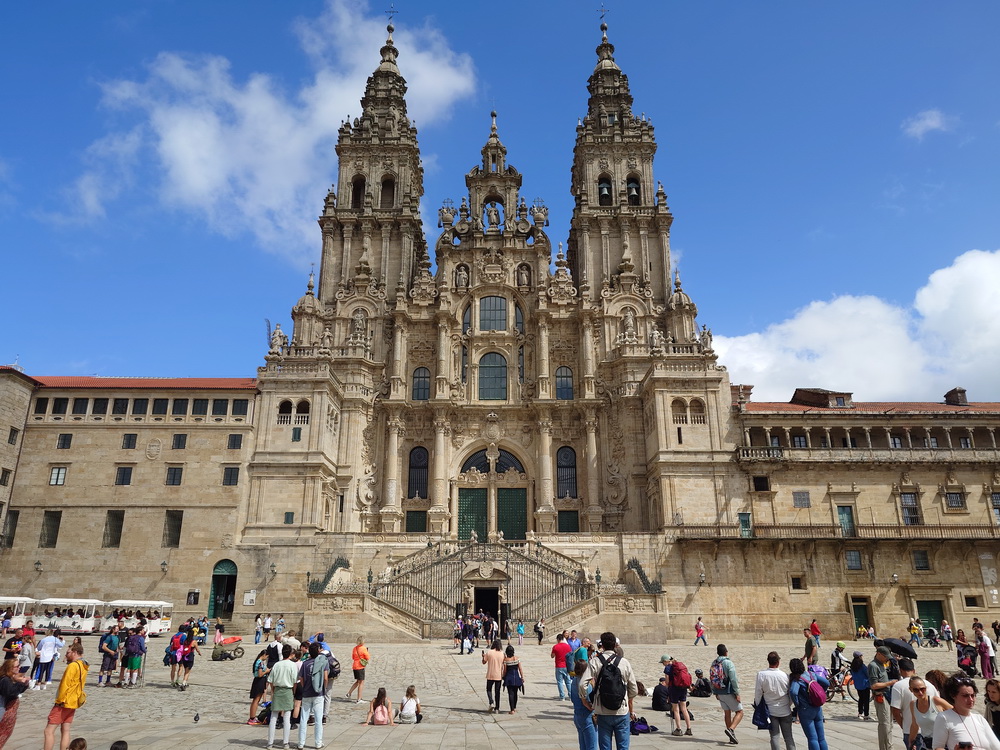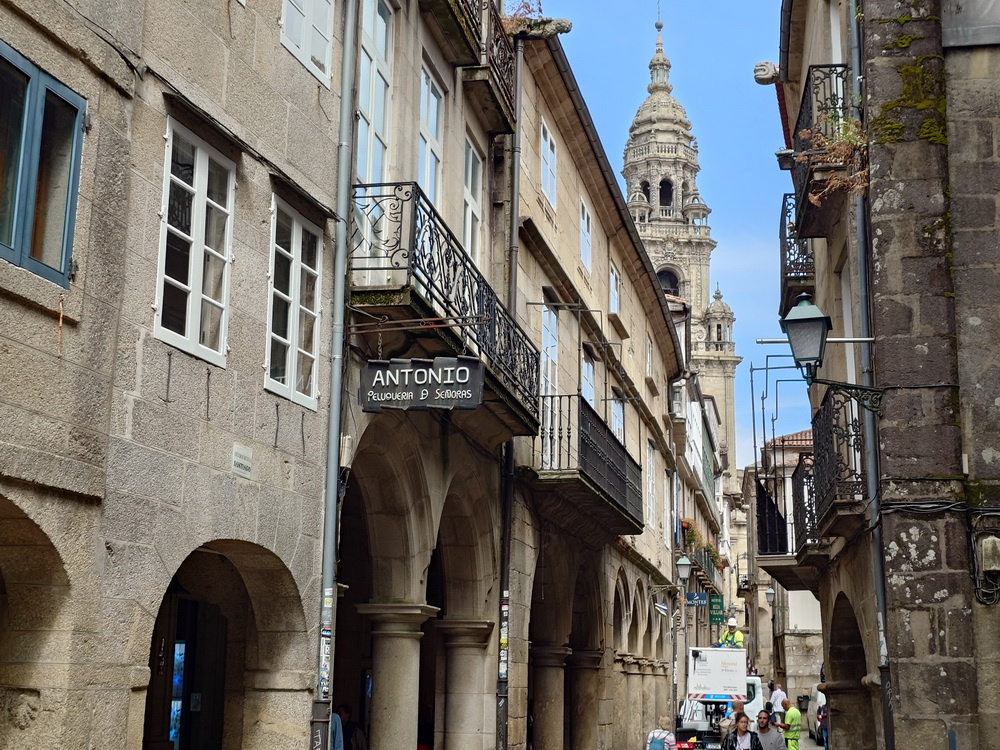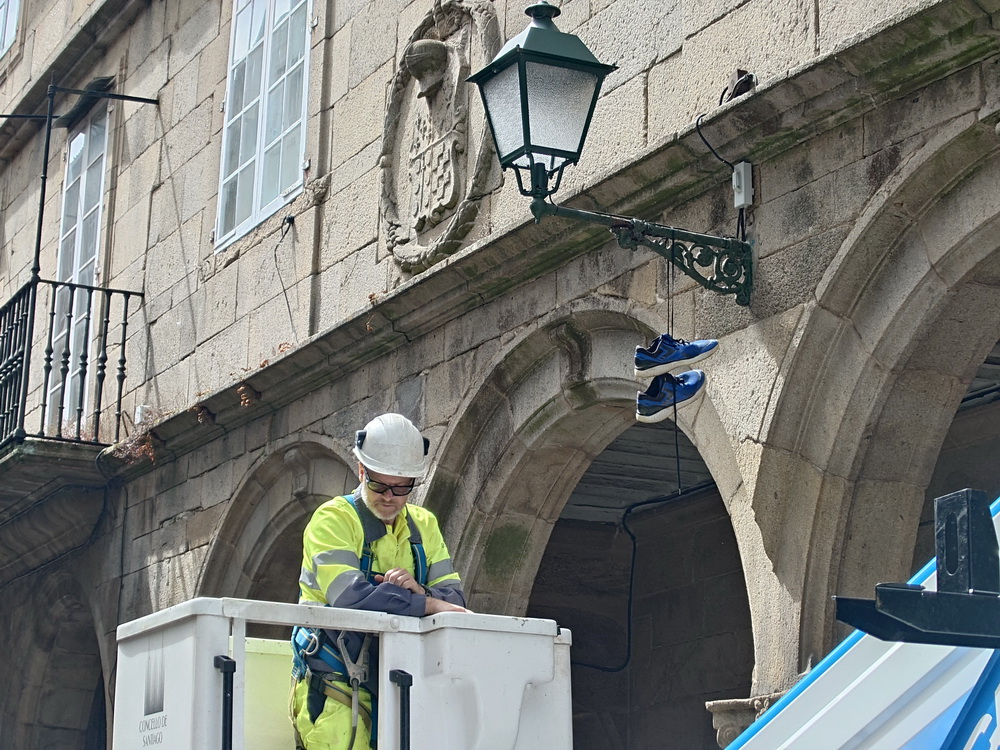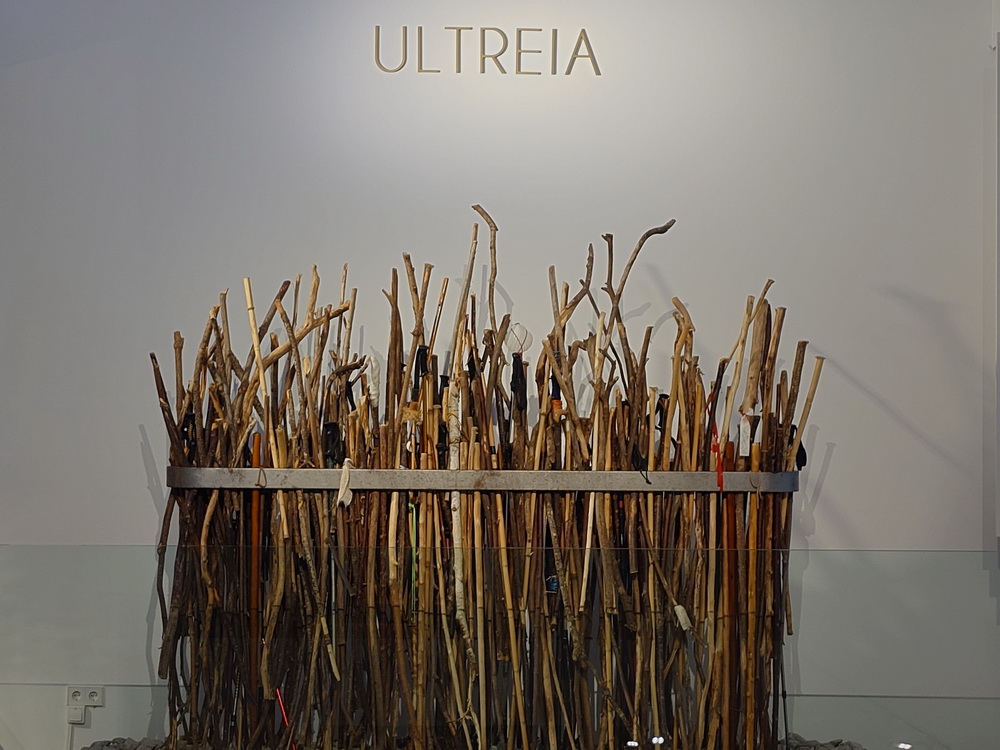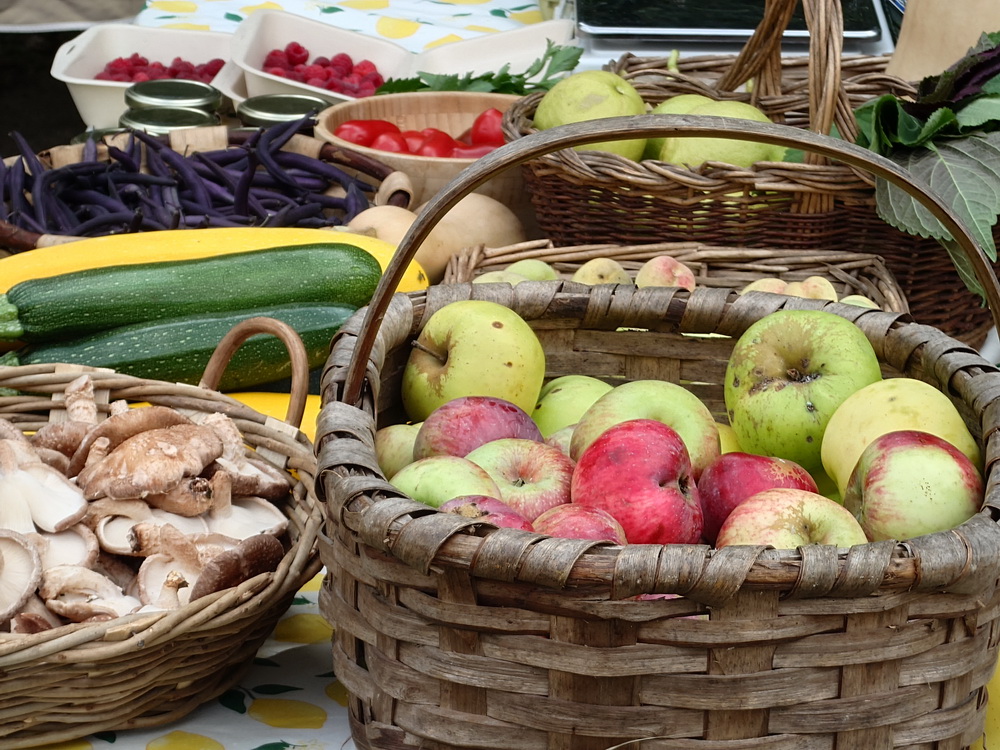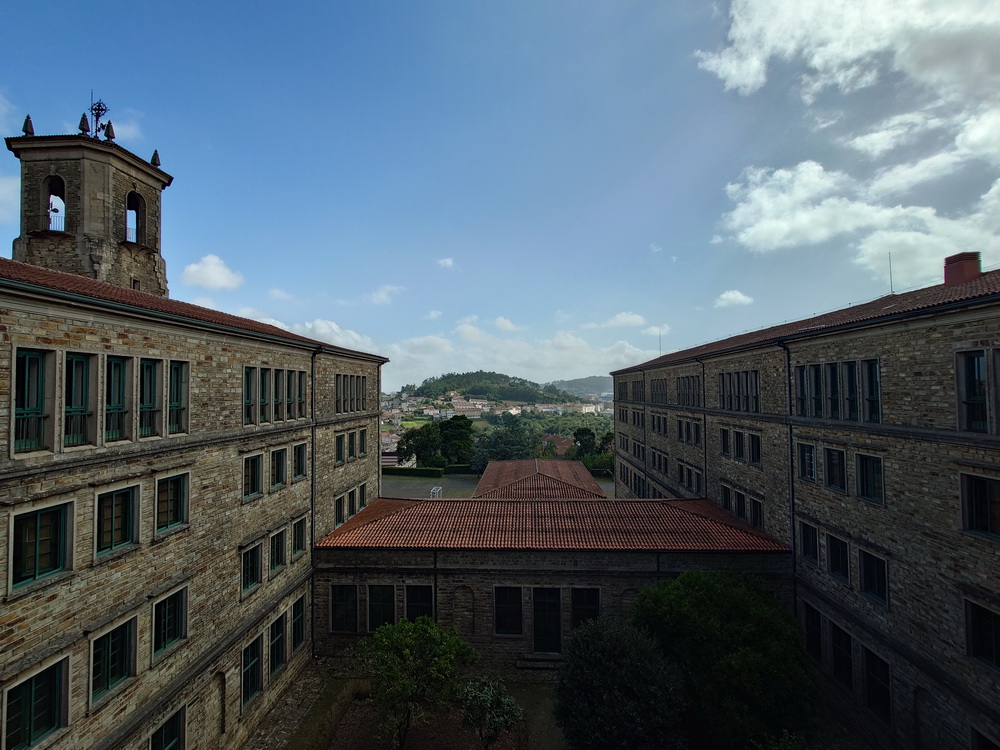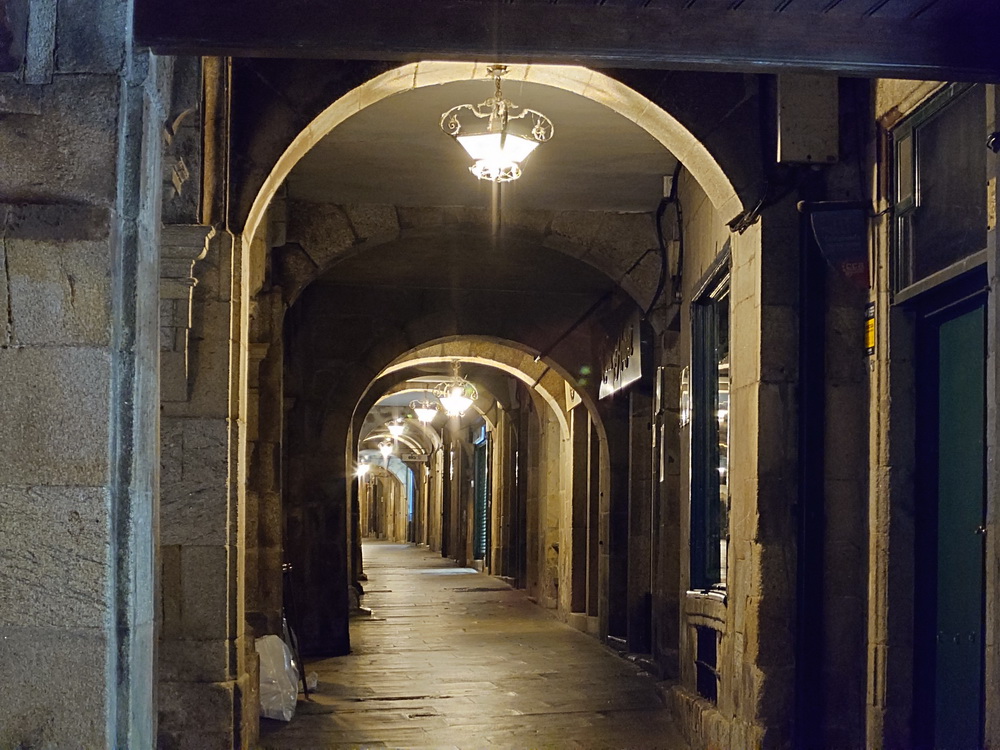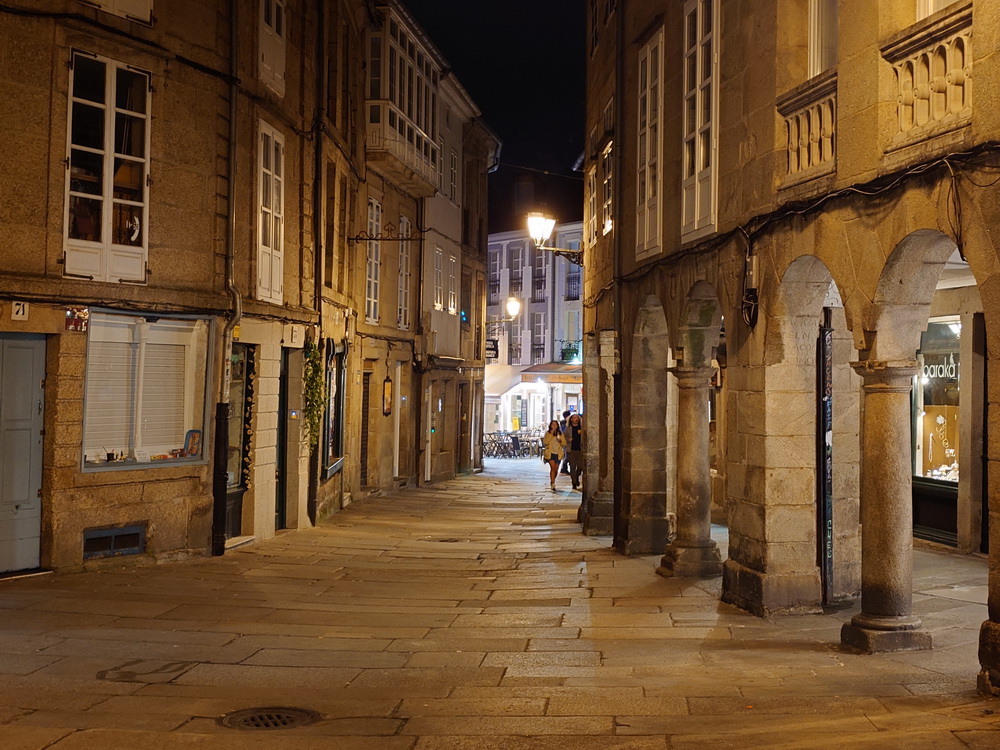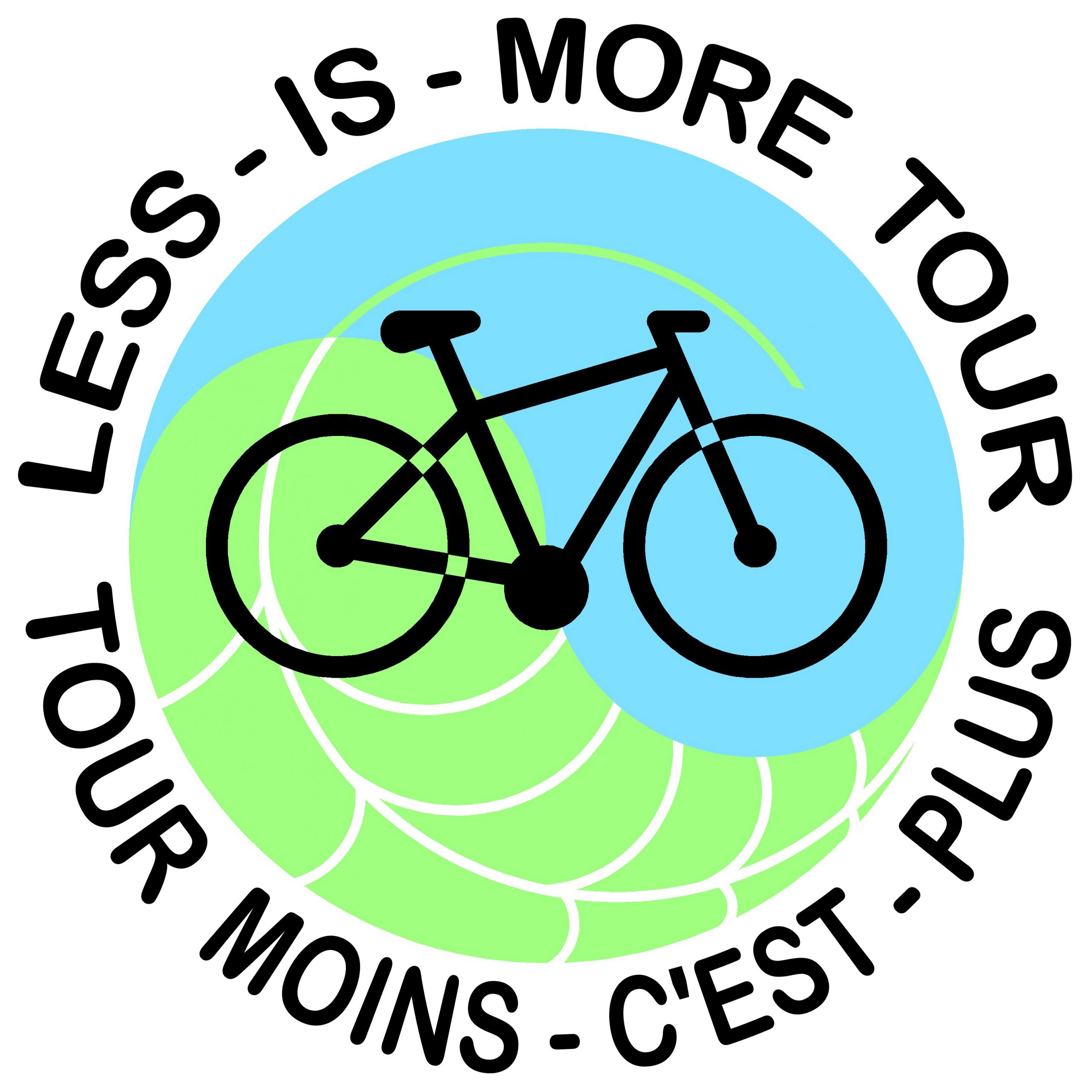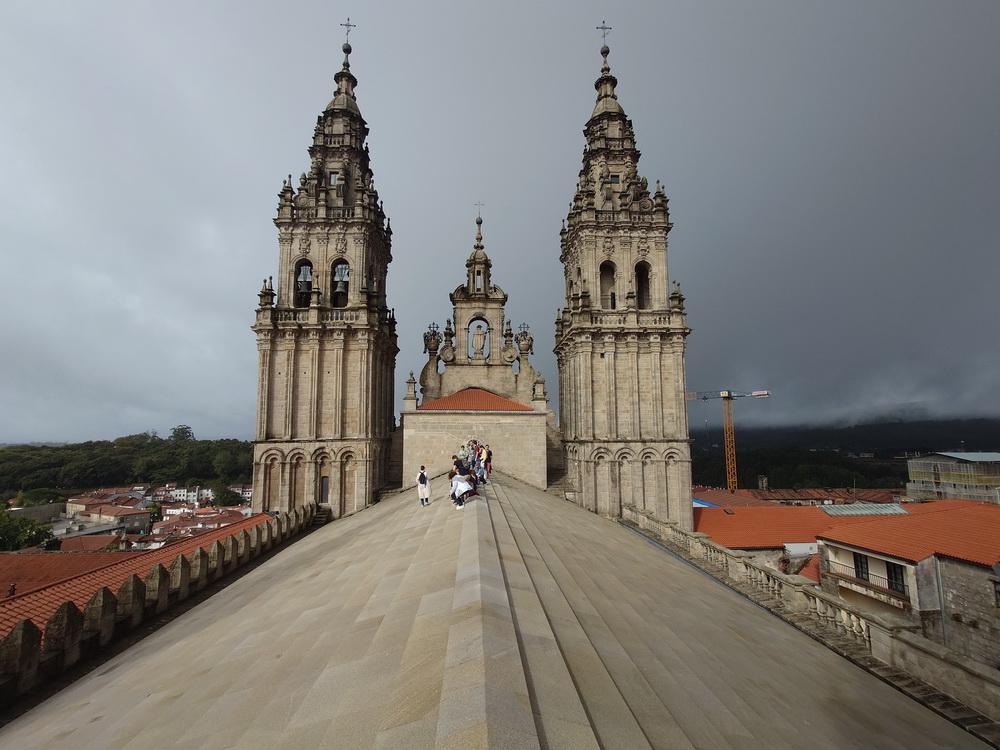2nd of September we had pre-booked a tour on the rooftop and tower of the cathedral and the weather was cloudy but stayed dry during the visit. The tour started at the museum where we already had the chance to look at some of the treasures of Santiago. There was a beautiful copy of the central figure of the Portico of Glory, which was the original entrance for the pilgrims and can only be seen with an extra ticket and reservation. But I was happy to be very close to this copy of the statue representing St James, being originally created by Master Mateo from 1168-1188. I had seen this presentation of St James everyday on our tour as it was on the front page of our credentials, where we collected our stamps since the beginning of our project.
This figure of St James originated from the mullion of the Portico of Glory and is seated holding in its left hand the pilgrim’s swagger stick and in its right hand a scroll which contains the words “Misit me Dominus” (= “the Lord sent me”).
We started with the tourguide to discover wonderful representative rooms and were able to follow her description perfectly as, although the tour was in Spanish, she had done a great volunteering job in offering a translated version in English on pdf-files to be downloaded on our mobile phones. We climbed up onto the roof, and as the cathedral of Santiago de Compostela always was a shelter for one of the most important religious treasures, it was built as a fortress. This was one of the reasons why the roof was covered by masoned granite stones instead of tiles to avoid being attacked by fire. So you were walking on massive rock feeling grounded high above the foundations of the cathedral.
The roof was in perfect condition because the renovations had recently been finished. You had a spectacular view of the city from up there and from the tower. In the middle crossing of the four roofs the structure of the cupola was erected and offered a view inside through a window where you could see the steel construction holding since 1604 the “Botafumeiro”, one of the largest censers in the world. It’s measuring 1,93m in height and weighs 80 kilos.
We missed seeing it on our first mass on the day we arrived. We asked the tourguide if she thought there was a chance this time and she told us to give it a try and hurry down the tower and get to the pilgrims’ mass. After having ran down the stairs of the tower they didn’t let us enter at the northern gate. So we had to get all around the cathedral and discovered an endlessly long queue standing in line for the mass. We hoped we could still make it as we got closer to the entrance control and they already didn’t let any more tourists in to visit. Only pilgrims were allowed. We made it and I found a place right by the centre column of the southern wing leaning my head to the granite carrying all the tons of stones we just had been walking on. We were completely wet from all the running we had done and needed our time to cool down.
As the mass went on there was no smell of incense or anything showing a sign of smoke. After the Communion took place Robert discovered that they brought in a shovel with glowing coal from the cloister into the church, and suddenly they moved the Botafumeiro to the altar.
Eight red-robed Tilaboleiros pull the ropes producing increasing oscillations of the senser which reaches up to 21 meters height and at a speed of 68 km/h nearly reaches the ceiling of the transept. The organ is accompanying the pilgrims’ chants and builds up the sound carpet as the intensifying speed is creating wind whistling of the thurible swinging through the space in a 65m arc.
It’s difficult to escape from this impressive orchestration of speed, sound and senses which made Robert and me just finding us in tears being overwhelmed by what we were able to experience and how lucky we were to have been during this whole trip staying safe and sound.
After that we needed some lunch and posted some postcards for friends and family announcing it as our postcard lottery as we only had time to send three of them.
We still had a look at the parts of the museum that we still hadn’t seen and went back quite tired to the Seminario Menor.
Robert took care of the laundry and I tried to find a place to work on my blog which was difficult in this huge building. You could only find some tables in the corridor where a constant current was causing a non-stop draft. It was the most uncomfortable place to work, but I needed to find time to catch up on the diary as I was already way behind.
While I was typing on my laptop suddenly someone was standing beside me and I had noticed him only in the corner of my eyes, but not realizing it was Chris who I had helped with the plaster in Triacastela four days ago. Maybe I didn’t recognize him because I didn’t expect him to be already running around without plaster, but his wounds had already healed so well that he didn’t need them anymore.
I was so pleased for him and he told me that now having arrived safely in Santiago de Compostela he had had the courage to tell his wife about his accident and how much we had helped him. We would always be welcome to visit them in the Lake District.
He had to leave early tomorrow and therefore he couldn’t join us for dinner anymore.
I still had some hours writing my diary and we were very late to leave for dinner, but still had some wonderful vegetarian Curry at the Green-House.
